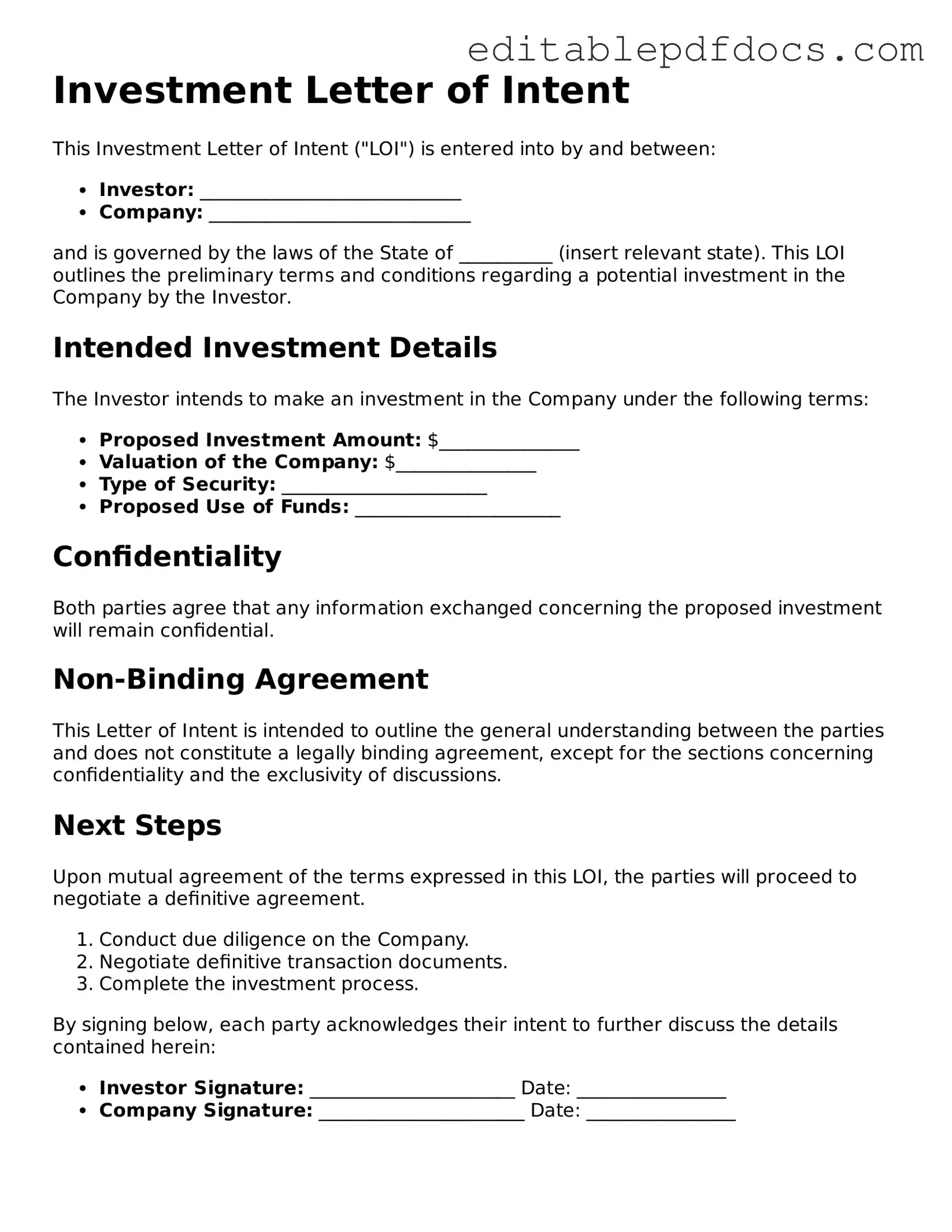Filling out an Investment Letter of Intent form can be a straightforward process, but many people make mistakes that can lead to delays or complications. One common error is providing incomplete information. When applicants skip sections or fail to include necessary details, it can slow down the review process. Make sure to read each section carefully and provide all requested information.
Another frequent mistake is not double-checking for accuracy. Typos or incorrect figures can undermine the credibility of your application. Always verify that your financial details, names, and addresses are correct before submitting the form. A simple error could result in misunderstandings or even rejection.
People often overlook the importance of signatures. Failing to sign the form or forgetting to include a date can render the document invalid. Ensure that you sign in the designated areas and include the date to confirm your intent.
Some individuals neglect to follow the specific instructions provided with the form. Each investment opportunity may have unique requirements, and failing to adhere to these can result in your application being dismissed. Pay close attention to any guidelines or additional documents that may be required.
Another mistake is submitting the form without reviewing deadlines. Missing a deadline can mean missing out on investment opportunities. Always check when the form is due and plan to submit it well in advance.
People sometimes forget to keep copies of their submitted forms. Having a record of what you submitted can be incredibly useful if there are questions or issues later on. Make sure to keep a copy for your own reference.
Lastly, some applicants fail to seek help when needed. If you’re unsure about any part of the form, don’t hesitate to ask for clarification. Reaching out for assistance can save you time and prevent mistakes that could jeopardize your investment intentions.
